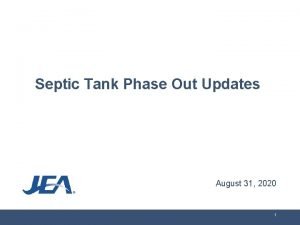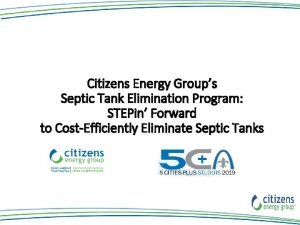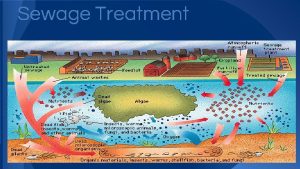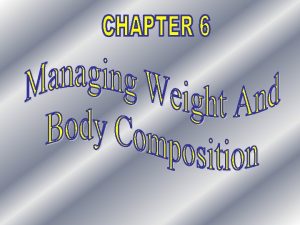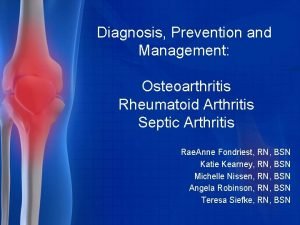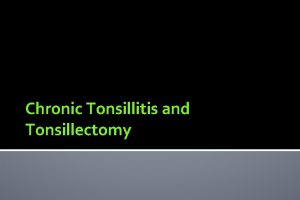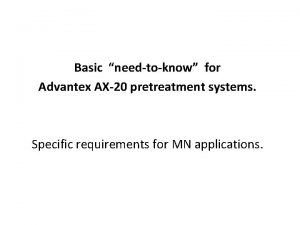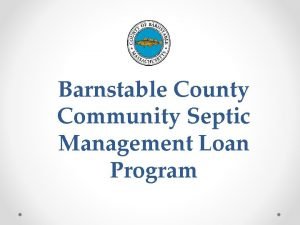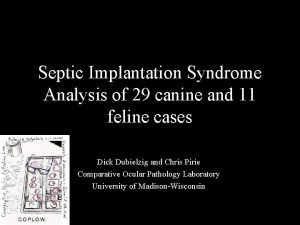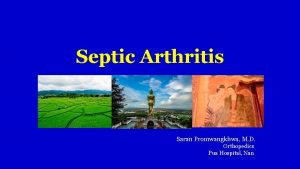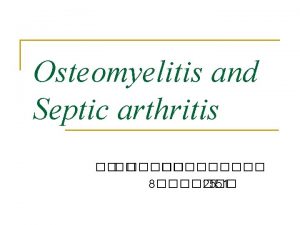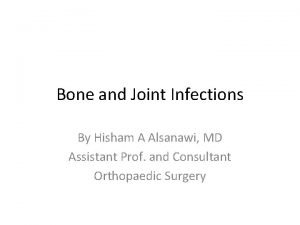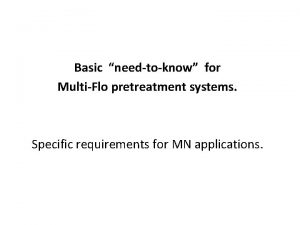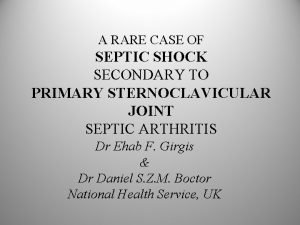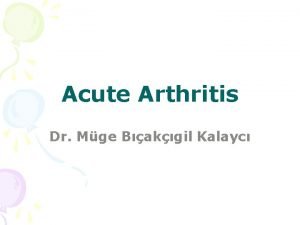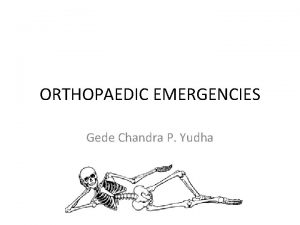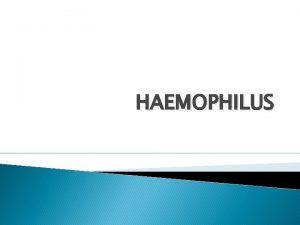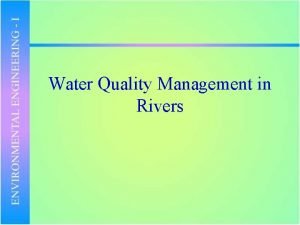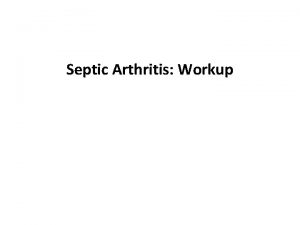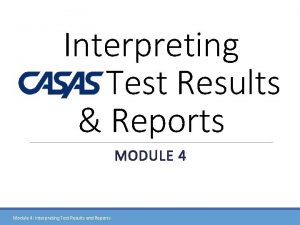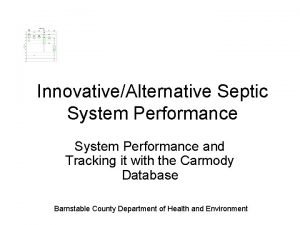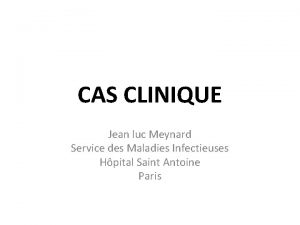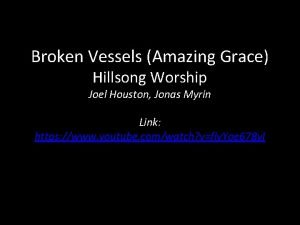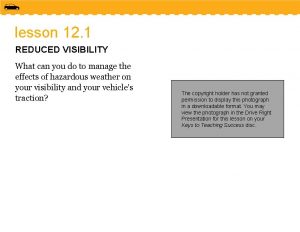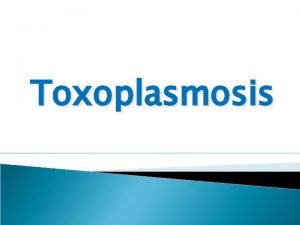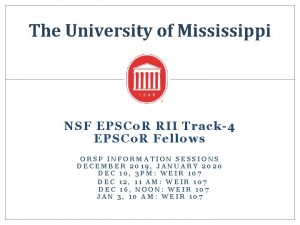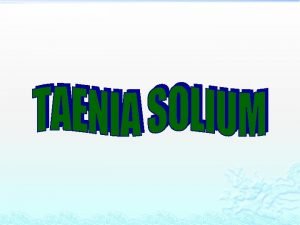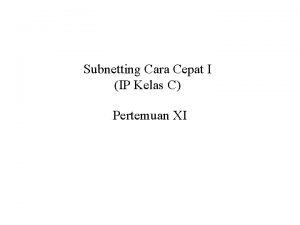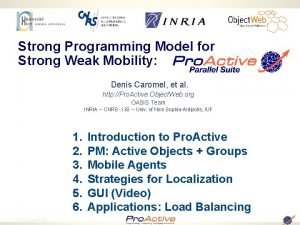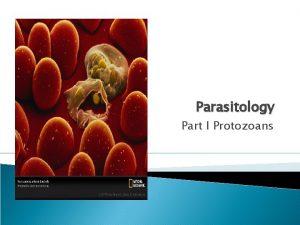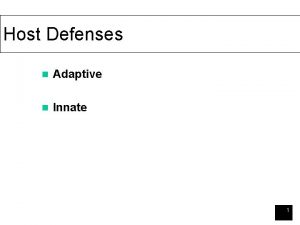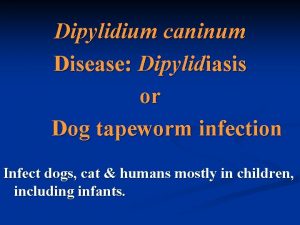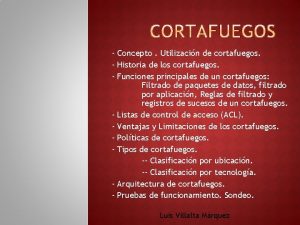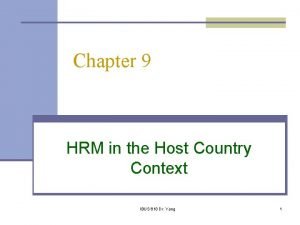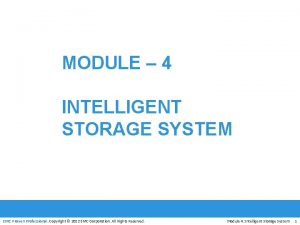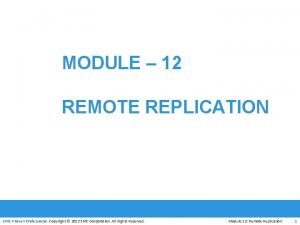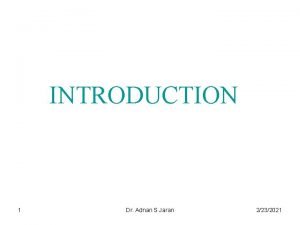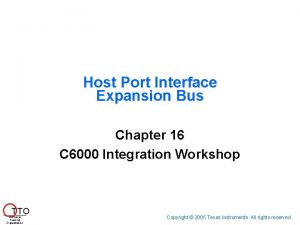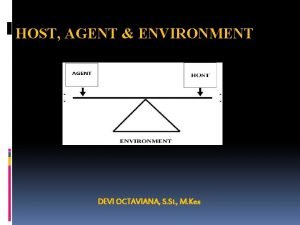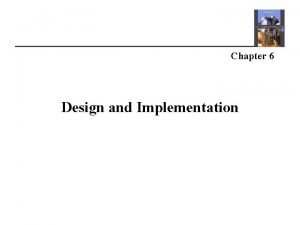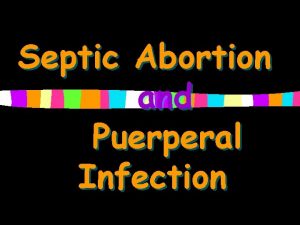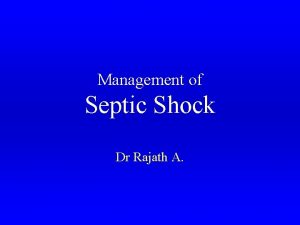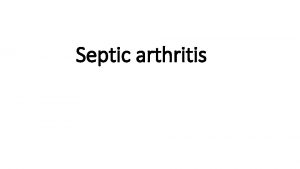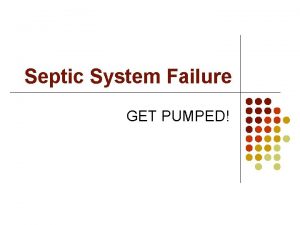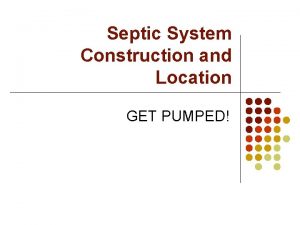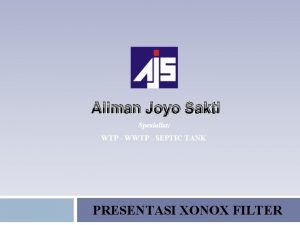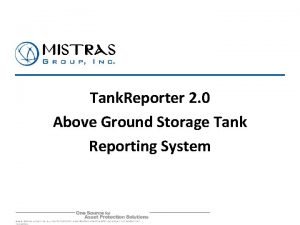THIS IS With Your Host Septic Tank See





































































- Slides: 69


THIS IS

With Your Host. . .

Septic Tank See You in “Sept” -ic Compensatory Stage Obstructive Shock Making “Progress” More “Progress” 100 100 100 200 200 200 300 300 300 400 400 400 500 500 500

In sepsis, neutrophils and platelet aggregation will adhere to this intima of blood vessels. . A 100

What is the endothelium? A 100

Vasodilation, maldistribution of blood flow, and myocardial depression. A 200

What are the 3 major pathophysiologic effects of septic shock? A 200

Blood volume being neither HYPO- nor HYPER- A 300

What is NORMO- volemic? (because of acute vasodilation, hypovolemia and hypotension will develop in a normovolemic patient) A 300

Decreased blood flow in the microcirculation causes these 2 morbid conditions to develop. A 400

What is poor oxygen delivery and tissue hypoxia? A 400

The persistence of a high CO and a low SVR beyond 24 hours is ominous and associated with increased HYPO- tension and THIS not “modest” disorder. A 500

What is MODS? (Multiple Organ Dysfunction Syndrome) A 500

Of hypoventilation and hyperventilation, the result of a patient’s compensatory mechanism during the ONSET of septic shock. B 100

What is HYPER- ventilation? (which leads to respiratory alkalosis and eventually to respiratory acidosis) B 100

Respiratory failure will develop in 85% of patients with sepsis, while 40% will develop THIS “distressful” syndrome. B 200

What is Acute Respiratory Distress Syndrome? (ARDS) B 200

ARDS patients will require THIS intervention. B 300

What is intubation? (with subsequent mechanical ventilation) B 300

Alteration in neurologic status, decreased urine output (UO), and GI bleeding and paralytic ileus. B 400

What are other clinical signs of septic shock? B 400

The combination of these 2 inflammatory factors is thought to have a role in sepsis-induced myocardial dysfunction. B 500

What are TNF and IL-1? (Tumor Necrosis Factor & Interleukin-1, respectively) B 500

In shock, the time when a victim’s skin is warm and flushed. C 100

When is during EARLY septic shock? C 100

Decreased blood flow to the kidneys activates THIS system. C 200

What is the renin-angiotensin system? (Renin angiotensinogen angiotensin II = a potent vasoconstrictor for arteries and veins) C 200

The net result of vasoconstriction. C 300

What is an increase of venous return to the heart or an increase in BP? C 300

DAILY Place A Wager DOUBLE C 400

Angiotensin II stimulates the adrenal cortex to release THIS hormone. (Just trying to “stir” up your memory) C 400

What is aldosterone? C 400

Aldosterone increases the kidneys’ excretion of this electrolyte. C 500

What is potassium? (Plus the reabsorption of sodium and water) C 500

Decreased perfusion to the GI tract leads to a decreased ability to absorb THESE metabolites. D 100

What are nutrients? D 100

Renal tubular ischemia D 200

What is the effect of prolonged HYPO - perfusion of the kidneys? (this acute tubular necrosis ARF) D 200

Certain antibiotics, anethestics, and diuretics. D 300

What are types of nephrotoxic drugs which may exacerbate ARF? D 300

HYPO- perfusion results in a shock patient’s decreased urine output (UO) and elevated levels of THESE 2 blood markers. D 400

What are BUN (blood urea nitrogen) and serum creatinine? D 400

The type of acidosis that occurs when the kidneys are unable to excrete acids (esp. lactic) and reabsorb bicarbonate. D 500

What is metabolic? D 500

Sustained HYPO- perfusion in the progressive stage of shock results in THIS over accumulation of bilirubin. E 100

What is jaundice? E 100

Alanine aminotransferase, aspartate aminotransferase, and gamma-glutamyl transpepsidase. E 200

What liver enzymes become elevated as liver cells die? (ALT, AST, GGT) E 200

The special liver cells that normally destroy bacteria, yet become useless as hypoperfusion escalates. E 300

What are Kupffer cells? (bacteria then release into the bloodstream systemic bacteremia) E 300

The 3 intravascular coagulation sites where the bleeding due to DIC is clinically significant. E 400

What are the GI tract, the lungs, and puncture sites? E 400

In the progressive stage of shock, aggressive interventions are necessary to prevent the development of THIS condition involving more than just a liver or the lungs, for example. E 500

What is MODS? (Multiple Organ Dysfunction Syndrome) E 500

The myocardial dysfunction from decreased perfusion results in THESE probable complications. F 100

What are dysrhythmias, myocardial ischemia, and AMI? (acute myocardial infarction) F 100

THIS system is often the FIRST one to display signs of critical dysfunction in the progressive stage of shock. F 200

What is the pulmonary system? F 200

With further increases in capillary permeability, fluid moves to THESE inflatable lung structures. F 300

What are the alveoli? (resulting in alveolar edema and decreased surfactant production impaired gas exchange and decreased lung compliance) F 300

The 2 clinical signs in the lungs of a shock patient. F 400

What are tachypnea, crackles, and/or overall increased work of breathing? F 400

Ischemia occurring in the GI tract predisposes a shock patient to THESE 2 insidious complications. F 500

What are GI bleeding and ulcers? F 500

The Final Jeopardy Category is: Types of Shock Please record your wager. Click on screen to begin

The characteristic that differentiates spinal shock from neurogenic shock. Click on screen to continue

What is the experiencing of the absence of all voluntary and reflex neurologic activity below the level of the injury? Click on screen to continue

Thank You for Playing Jeopardy! Game Designed By C. Harr-MAIT
 Jea septic tank phase out
Jea septic tank phase out Septic tank contamination groundwater
Septic tank contamination groundwater Septic systems indianapolis
Septic systems indianapolis Doc's septic tank cleaning
Doc's septic tank cleaning Definitive host vs intermediate host
Definitive host vs intermediate host Is the way you see your body.
Is the way you see your body. Boutonniere nodes
Boutonniere nodes Septic squeeze test tonsillitis
Septic squeeze test tonsillitis Advantex ax20
Advantex ax20 Barnstable septic loan
Barnstable septic loan Pickwickian syndrome in dogs
Pickwickian syndrome in dogs Septic arthritis complications
Septic arthritis complications Panhandle health septic
Panhandle health septic Septic arthritis antibiotics
Septic arthritis antibiotics Septic arthritis antibiotics
Septic arthritis antibiotics Qqq10
Qqq10 Multiflow septic system
Multiflow septic system Puraflo peat septic system
Puraflo peat septic system Septic arthritis complications
Septic arthritis complications Septic arthritis
Septic arthritis Haemophilus influenzae septic arthritis
Haemophilus influenzae septic arthritis Satellitism in haemophilus influenzae
Satellitism in haemophilus influenzae Example of gram negative cocci
Example of gram negative cocci Chemical oxygen demand
Chemical oxygen demand Septic spleen
Septic spleen Septic workup
Septic workup Septic
Septic Summit county septic permit
Summit county septic permit Admixtures
Admixtures Nitrex
Nitrex Non gonococcal arthritis
Non gonococcal arthritis Give us your hungry your tired your poor
Give us your hungry your tired your poor What comes to your mind when you see this symbol
What comes to your mind when you see this symbol Am i dirty minded quiz
Am i dirty minded quiz Types of irony practice
Types of irony practice Hillsong amazing grace how sweet the sound
Hillsong amazing grace how sweet the sound The term overdriving headlights means
The term overdriving headlights means Clap your hands all ye peoples make a joyful noise
Clap your hands all ye peoples make a joyful noise How do you see your future?
How do you see your future? True colors word sort
True colors word sort In your notebook watch out
In your notebook watch out We want to see your kingdom here
We want to see your kingdom here Remote desktop virtualization host role server 2012
Remote desktop virtualization host role server 2012 Fasciola hepatica
Fasciola hepatica Toxoplasma intermediate host
Toxoplasma intermediate host Orsp ole miss
Orsp ole miss Cysticercus cellulosae
Cysticercus cellulosae Free toast host
Free toast host Ip network kelas c
Ip network kelas c Weak host model
Weak host model Host-ert456
Host-ert456 Balantidium coli
Balantidium coli Classification of host
Classification of host Pearson
Pearson Host defenses
Host defenses Ancylostoma caninum
Ancylostoma caninum Screened host architecture
Screened host architecture Host country and home country
Host country and home country Vodafone hosting and cloud services
Vodafone hosting and cloud services Host computer definition
Host computer definition Types of intelligent storage system
Types of intelligent storage system Host module
Host module Paratenic host
Paratenic host Agent host
Agent host Expansion bus interface
Expansion bus interface Host agent environment adalah
Host agent environment adalah Sebuah sistem atau grup system yang menjalankan
Sebuah sistem atau grup system yang menjalankan Which is host element in wireless
Which is host element in wireless Domain host control protocol
Domain host control protocol Host target development in software engineering
Host target development in software engineering
